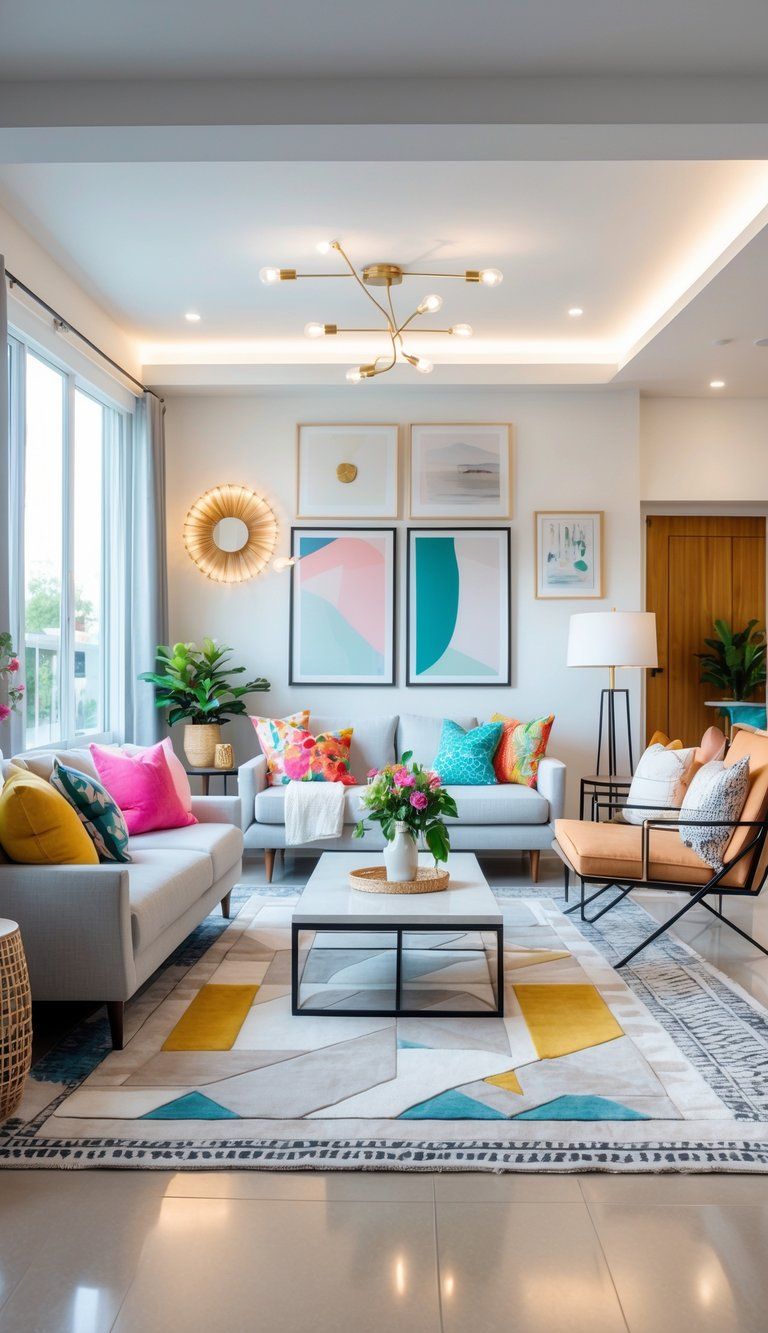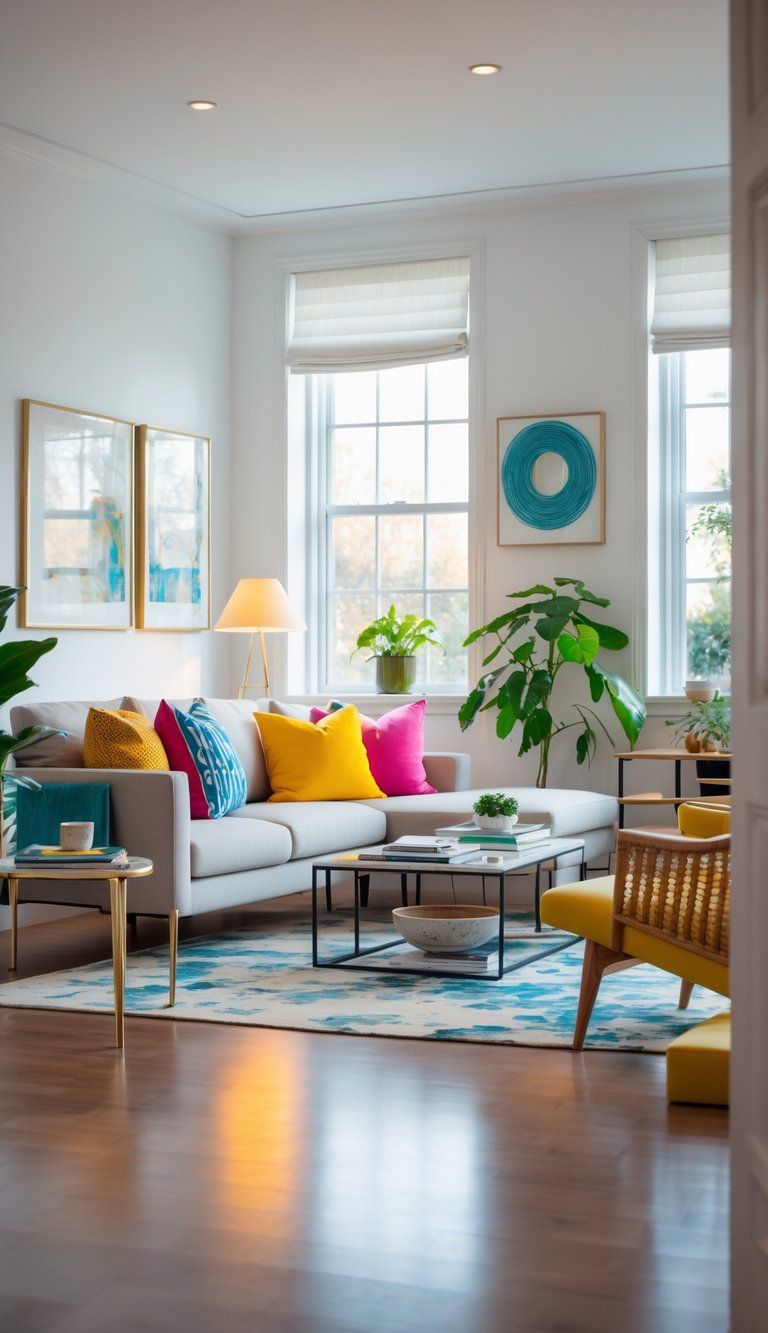Ever looked around your living room and thought, “Something’s just off?” Living in a space that doesn’t fit your personal style can feel as weird as wearing someone else’s jacket. Figuring out your real design style is honestly the first step toward loving your home for the long haul.
Remember to repin your favorite images!

A well-made design style quiz can cut through all the confusion and actually help you figure out what you like—Bohemian, Modern, Midcentury, or something else entirely. The best quizzes focus on your taste in colors, textures, and the vibe you want, rather than tossing random furniture at you.
After spending twenty years helping clients find their style, I’ve noticed that naming your design preferences gives you clarity and confidence. When you can say, “I’m into Scandinavian minimalism with a bit of industrial,” shopping gets easier, decisions feel natural, and your home finally starts to feel like you.
Understanding Design Style

Design style is just the way you show your personality through your home. It pulls together colors, shapes, textures, and furniture to create a look that feels right for you.
What Is a Design Style?
A design style boils down to a set of features that define how a space looks and feels. It covers your choices in furniture, colors, textures, patterns, and those little decorative touches that tie everything together.
Your style reflects you—your quirks, your favorites, your comfort zone. Some folks love clean lines and zero clutter (hello, Modern), while others want cozy nooks and vintage finds (think Farmhouse).
Design styles usually have some telltale signs. Mid-century Modern leans into organic shapes and those classic tapered legs. Industrial style? You’ll spot exposed brick and metal everywhere.
When you understand these styles, your choices stop feeling random. You shop with purpose and focus, and your space starts to make sense.
The Evolution of Interior Design Styles
Design styles haven’t stayed the same—they’ve shifted a lot as culture and technology changed.
Back in the early 20th century, Art Deco celebrated luxury and craftsmanship with bold patterns and fancy materials. By mid-century, people wanted function and clean lines, and mass-produced furniture became the norm.
The 1970s brought in earthy colors and lots of texture. The 1980s? Bright, bold, and sometimes wild. The 1990s moved toward minimalism, and the 2000s saw farmhouse style get a boost from TV.
These days, people mix styles instead of sticking to one. Modern homes often blend different eras and ideas:
- Transitional: Traditional meets contemporary
- Eclectic: Mixes styles and periods intentionally
- Biophilic: Brings nature and sustainability inside
Why Discovering Your Style Matters
When you know your design style, you save time, money, and a lot of headaches. You avoid buying stuff that doesn’t fit, and your space finally feels like it belongs to you.
Your interior style does more than just look nice—it impacts your mood and daily life. Living in a space that feels “you” can lower stress and boost happiness. It’s not just a theory; studies have shown our surroundings really do affect our well-being.
Defining your style also makes it easier to talk to designers, contractors, or even friends who help you decorate. Instead of saying, “I don’t know, just something nice,” you can point to specific styles or pieces.
Don’t worry if your style changes over time. That’s normal. The goal isn’t to stick to one look forever—it’s to figure out what feels right for you right now. Most people end up with a blend of styles, and that’s what makes a space unique.
How the Quiz Works

Forget those online quizzes that spit out vague answers. This design style quiz uses a system based on your visual preferences and lifestyle habits to actually pin down your unique vibe.
Quiz Methodology
We built this quiz by combining behavioral psychology with design know-how. Every question aims to reveal something real about your style—not just random trivia.
The quiz uses a weighted scoring system. Some answers matter more than others. For example, your feelings about color have a bigger impact than which chair you like.
This quiz doesn’t shove you into a single box. Instead, you get a main style and some secondary influences, because honestly, most people mix things up.
Types of Questions Included
You’ll see all kinds of questions. Some are visual—pick the room, furniture, or color palette that grabs you.
Lifestyle questions matter too. Do you throw parties? Work at home? Have pets or kids? These things can totally change which style works best for you.
Preference-based questions get into the details:
- Materials (wood, metal, glass)
- Patterns (do you love them, or not so much?)
- Colors (neutral, bold, or a certain color family)
- Budget (where do you splurge, where do you save?)
Measuring Your Unique Style
The quiz looks at your style across a bunch of different scales—like traditional to modern, minimal to maximal, organic to structured.
Your results break down your top styles, showing percentages so you see what influences you most. It’s a more layered, realistic picture of your taste.
You’ll also find out your “design dealbreakers”—the stuff you just can’t stand. Sometimes knowing what you hate is as important as knowing what you love.
After the quiz, you get personalized tips for making your style work, including furniture ideas, color palettes, and pitfalls to dodge based on your results.
Key Design Elements Shaping Your Results

Your quiz results come from the little details that make up your taste. These building blocks help you create a space that just feels right.
Furniture and Decor Choices
Your furniture choices say a ton about your style. If you like clean, simple pieces, you’re probably drawn to a modern look. If ornate details catch your eye, you might lean traditional.
People who love mid-century modern usually go for sleek, functional pieces with those classic legs. Farmhouse fans pick distressed woods and comfy, laid-back seating.
Your art and accessories say a lot too. Bold, standout pieces? That hints at an eclectic or maximalist side. If you keep things neutral and curated, you’re probably a minimalist.
Even your wall art gives away your style: abstract pieces for contemporary, landscapes for traditional, vintage posters for industrial or eclectic.
Textures, Materials, and Finishes
Texture is a big deal when it comes to style. Smooth, glossy surfaces usually mean you like modern or minimalist looks. Rough, natural textures suggest rustic or boho vibes.
Material choices tell their own story:
- Woods: Dark for traditional, light for Scandinavian
- Metals: Brass is glam, blackened steel is industrial
- Fabrics: Velvet screams luxury, linen is more chill
Finishes matter too. Matte gives a contemporary edge, while shiny surfaces feel glam. Distressed finishes point to farmhouse or rustic.
How you mix textures changes the whole mood. Layering similar textures makes things feel unified, while mixing them adds depth and keeps things interesting.
Popular Interior Design Styles Featured

Interior design styles help you shape a home that fits your life and personality. Each one brings its own colors, materials, and features to set the mood.
Contemporary and Minimalist
Contemporary design focuses on clean lines, neutral colors, and open spaces. It’s always current, but somehow never goes out of style.
Contemporary Must-Haves:
- Sleek surfaces
- Neutral base with bold pops of color
- Open layouts with tons of natural light
- Statement art and sculptures
Minimalist design takes things even further. It strips away the extras and keeps only what you really need.
Minimalist Vibes:
- Tight color palettes (think black, white, gray)
- Open, clutter-free spaces
- Simple, functional furniture
- Clever storage that hides the mess
Both styles feel right at home in city apartments and modern houses where simplicity brings a little calm to the chaos.
Industrial and Rustic
Industrial style leans into raw, unfinished elements, inspired by old factories and lofts. It’s bold, a bit gritty, but still manages to feel inviting.
Industrial Staples:
- Exposed brick and ductwork
- Metal fixtures and furniture
- Concrete or wooden floors
- Edison bulbs and pipe lighting
- Weathered wood with metal
Rustic design brings nature inside with organic materials and earthy colors. It creates a warm, lived-in feel.
Rustic Details:
- Handmade wooden furniture
- Stone accents and fireplaces
- Natural fabrics like wool and cotton
- Earthy color palette
- Vintage or antique touches
Both styles shine in converted spaces like lofts or country homes where original features stand out.
Eclectic and Maximalism
Eclectic style is all about mixing things up. If you like collecting things you love, this might be your style.
Eclectic Traits:
- Blends different styles on purpose
- Showcases personal collections
- Mixes textures and patterns thoughtfully
- Uses color schemes to tie it all together
- Combines old and new pieces
Maximalism turns up the volume—more color, more pattern, more everything.
Maximalist Signs:
- Layered patterns and textures everywhere
- Bold, saturated colors
- Gallery walls and lots of collected treasures
- Statement furniture and lighting
- Luxe fabrics like velvet and silk
These styles give you room to show off your personality and all the things you love.
Farmhouse and Art Deco
Farmhouse style feels cozy and welcoming, with just enough rustic charm. It’s about comfort, but with a bit of character.
Farmhouse Touches:
- Shiplap walls, barn doors
- Vintage or weathered furniture
- Neutral colors with black accents
- Apron sinks, open shelves
- Woven baskets and natural fabrics
Art Deco is all about glamour and bold geometry, channeling the 1920s and 30s.
Art Deco Highlights:
- Strong geometric patterns
- Deep colors like emerald, gold, black
- Mirrored and chrome surfaces
- Symmetrical, repeating designs
- Luxe materials like velvet and marble
Both styles bring a different kind of character, each rooted in its own era.
Interpreting Your Quiz Results

You finished the design style quiz—now what? Your answers reveal a lot about what you like, and they’re your best guide for future design choices.
Understanding Your Primary Style
Your quiz results highlight a primary design style that matches your answers. This style shows your core aesthetic preferences—maybe it’s Modern, Traditional, Bohemian, Industrial, Scandinavian, or something else entirely.
Each style brings its own vibe. If your results point to Modern, you probably like clean lines, minimal frills, and functional spaces.
If you lean toward Traditional, you might gravitate to timeless designs, symmetry, and classic elements.
Don’t stress if your primary style doesn’t feel like a perfect fit. Design tastes shift, and most of us don’t land squarely in one box.
Try to figure out what parts of your main style really speak to you. Is it the color palette? Maybe the furniture shapes or the textures? These little details will help you make design choices you actually love.
Embracing a Unique Style Combination
Most people don’t fit just one design category. Your quiz might reveal a mix of styles that creates your unique aesthetic fingerprint.
Maybe you end up with a Modern-Industrial blend—think sleek lines with raw, edgy materials. Or you might discover a Bohemian-Scandinavian mix, where eclectic pieces meet clean simplicity.
These combos make your spaces feel personal. They show off your experiences, values, and preferences in a way no single style ever could.
Here’s one way to work with your style blend:
- Use your primary style for major elements like big furniture or the overall layout.
- Bring in your secondary style with accessories and accent pieces.
- Let color tie everything together, bridging the gap between styles.
Your style will probably change as you find new inspiration and go through different phases of life.
Applying Your Style in Your Space

Once you know your design style, you can start bringing it to life at home. Turning your style into an actual space helps your rooms feel personal and pulled together.
Inspiration for Decorating
Start collecting images that match your style. Make a digital or physical inspiration board with photos from magazines, websites, or social media.
This visual stash keeps you focused when you shop for furniture and accessories.
Pinterest and Instagram are full of design ideas. Follow interior designers who work in your style to see real-world examples that match your vibe.
Try saving 10-15 images of rooms you love. Notice what draws you in—is it the shapes, colors, or textures? Those patterns reveal what you actually like.
Design magazines like Architectural Digest or HGTV Magazine offer curated examples of great style. Even if your budget is smaller, you can adapt ideas from these sources.
Balancing Bold Colors and Typography
Color instantly changes a space’s mood. If bold colors call your name, start with a neutral base and sprinkle in color through pillows, art, or small furniture.
If you prefer softer tones, add interest with texture instead of bright hues. Mix materials like wood, metal, glass, and fabrics in similar shades.
Typography—the fonts you use in your decor—can reinforce your style. Modern styles shine with clean, sans-serif fonts in wall art or decor. Traditional rooms look great with more ornate lettering.
Consider:
- Color wheel relationships for picking complementary colors
- 60-30-10 rule: 60% main color, 30% secondary, 10% accent
- Typography in artwork that shows off your personality
Optimizing Layouts for Your Style
Arrange your furniture to fit both your style and your lifestyle. Modern and minimalist looks work best with open layouts and some breathing room. Traditional styles often use symmetrical setups with a clear focal point.
Measure your space before you buy anything. Sketch a floor plan on graph paper or try a free online tool like Roomstyler to play with different layouts.
Think about how people will move through the room. Leave at least 30 inches between pieces so everyone can walk around comfortably (more tips here).
Scale really matters. Big rooms can handle large furniture, but small spaces need smaller pieces. Oversized furniture in a tiny room just feels cramped, no matter your style.
Try not to push all your furniture against the walls. Floating pieces can create cozy conversation spots and show off your design style better.
Next Steps After Completing the Quiz

Finding your design style is really just the beginning of your home transformation journey. Now comes the fun part—putting that knowledge to work and making your vision real.
Working With Interior Designers
Once you know your style, you’ll have a much easier time working with a pro. When you meet with interior designers, bring your quiz results to your first chat. That way, they know your preferences right from the start.
Designers love clients who can talk about their style. You’ll save time and money by skipping directions that don’t fit your taste.
Many designers offer different levels of service, from full makeovers to simple consultations where they help you pick out pieces that match your style.
Ask designers about their experience with your favorite style. Check their portfolios to see if they’ve created spaces you like. The right designer will build on your style, not swap in their own.
Finding Resources and Advertisements
Your design style really shapes how you sort through the endless home décor ads and resources out there. It helps to start by making Pinterest boards or saving ideas in folders, each organized by your style category.
Go ahead and follow brands and stores that just get your aesthetic. A lot of retailers actually let you shop by style, which honestly makes it so much easier to find pieces that vibe together.
Want to stay in the loop? Sign up for newsletters from your favorite stores and they’ll send you style-specific picks right to your inbox.
Design magazines and blogs focused on your style can spark a ton of inspiration. They usually show off real homes and share practical tips for nailing certain looks.
Some even put together buying guides with furniture and accessories you can actually get your hands on right now. That’s always helpful, isn’t it?
Keep an eye out for seasonal sales that highlight items in your style category. Shopping this way makes it easier to build a cohesive space and sidestep those random impulse buys that just don’t fit.

